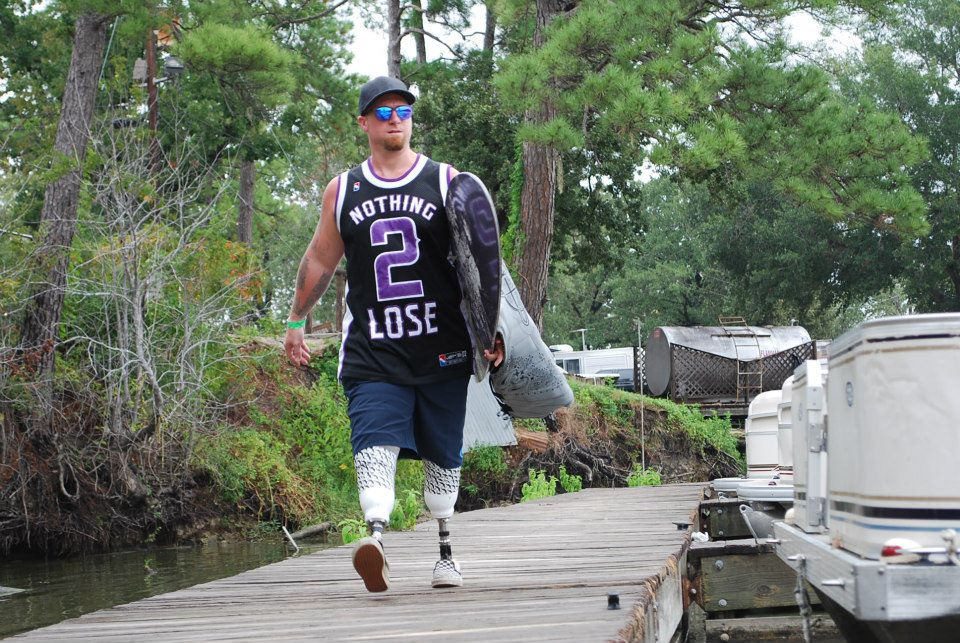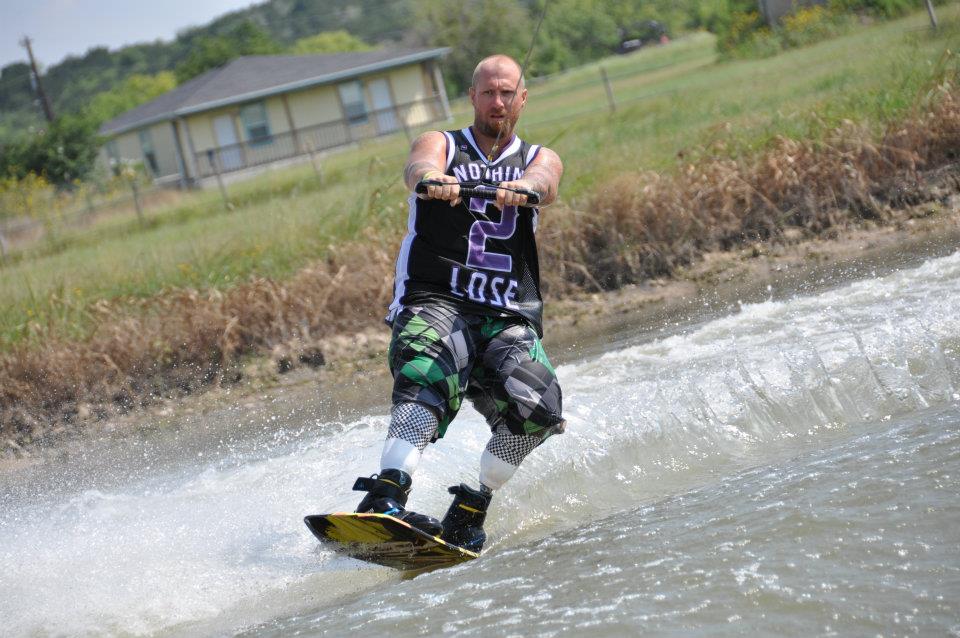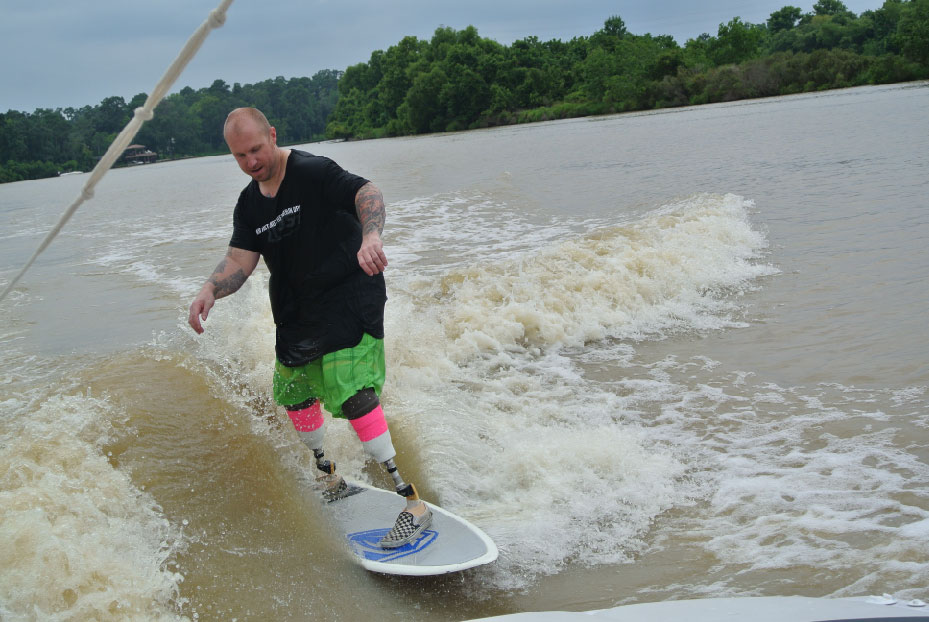Man on the Edge
Call him an adrenaline junkie, thrill-seeker or extreme, one thing you can’t call Wes Webb is a quitter.
For as long as he can remember, Webb has been the kind of person who tries to fly the highest, ride the fastest and get the most out of his body. When he was 17 he broke his femur. About a year later it was his back. Soon other bones in his legs and arms found their way into those all-to-restricting plaster casts.

It was the price Webb was willing to pay for his desire to live a life on the edge.
He climbed upon and rode bulls that would frighten the toughest of cowboys. He mastered the wake board. He’d jump his bike off any ramp.
Then he started skydiving—the ultimate thrill for a person who had tried just about every other extreme sport.
“It was awesome. I’d never experienced anything like skydiving,” said Webb, who was working off-shore on the 20,000-ton Deepwater Horizon drilling rig at the time. “Anytime I was at home I was pretty much at the drop zone.”
From thousands of feet above the ground, Webb felt invincible—until one day, his chute didn’t open properly.
Choices
A day before he was supposed to set sail for Singapore for another off-shore gig, Webb climbed into an airplane to make another jump. Wind blew, clouds roiled and turbulence shook the plane.
“We shouldn’t have been jumping to begin with,” Webb said. “But I didn’t care—I wanted to jump.”
Webb leapt from the plane and his parachute began to open, but something wasn’t right. Confident in his abilities as a skydiver and overall stubbornness, Webb chose not to open his emergency chute and instead did his best to maneuver the malfunctioning chute toward the fast-approaching landing area.

“I used the rest of the parachute to fly, but it wasn’t flying normally,” said Webb. “As I was coming out of the turn, right at the ground level, I was doing about 50 miles-per-hour.”
Webb hit the ground feet-first. His ankles exploded. His right femur shattered. But thankfully, he was alive.
Three weeks and nearly a dozen surgeries later, doctors had put his bones back together like a 10,000 piece jig-saw puzzle. He spent the next nine months at home in a wheel chair. The plan for Webb was to walk again normally.
Unfortunately, things didn’t go as planned.
Webb developed a case of osteomyelitis, a bacterial infection of the bones. For many amputees, it might have been enough to make them think about quitting the effort to walk again. But Webb didn’t give up. He began to research ways to regain balance in his life.
It was somewhere at this point, he first started to consider possible amputation.
My Life, My Choice
“I told my doctor that I wanted to amputate my left leg,” he said. “He wasn’t supportive, to say the least. I fought him over it for about a month and finally, he agreed. I got my prosthetic on that leg about six weeks later.”
On his own choice, Webb had his left leg amputated and was fitted with a prosthetic leg. Like many new amputees, he found his new leg to be uncomfortable. Amputees take their own path, and Webb’s journey took about a year.
Through trial and error, he learned to walk with his new leg. He began to move without pain. He regained his balance. And he noticed something interesting about his left leg.
“I noticed that the prosthetic was actually better than what was left of my right leg, so I went back to my doctor and told him I wanted to do the same with my right leg,” Webb said.

His doctor was skeptical and even more unwilling to perform the surgery. But after a year, and threats to have the procedure performed out of state, Webb had joined the ranks of double amputees, a bi-lateral.
He was fitted for another prosthetic—and began to regain his adventurous spirit.
“It wasn’t easy,” he said. “I would never tell anyone it’s easy. But my legs don’t slow me down that much.”
The Foot
One reason Webb has been able to get back on his feet is the RUSH Foot®, which he discovered while reading about advances in prosthetics online. Webb, who has tried various prosthetic feet, says he has never felt a foot like the RUSH® before.
“What I like about it is that you can push down on the toe, and it will absorb the push, but it won’t spring you right back,” he said. “It absorbs the energy and only returns the energy when you want it to.”
Today, Webb is making the most of all the energy available to him. He’s back working at the same company, although he no longer travels off shore. He’s back to wakeboarding, running and mountain biking—even riding more than 75 miles in a single day—all with the RUSH® foot.
Thanks to his unwillingness to quit, Webb is back to living an extreme life.

 English
English  Français
Français 